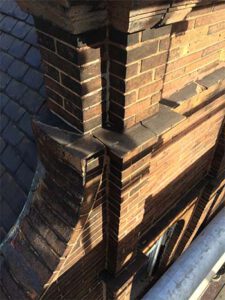When performing masonry restoration, it is important to determine the source of the problem and to test different treatment options. The type of treatment used will determine how well the restored masonry wall will perform. It is also important to understand the time and budget constraints of the project. Visit Website for more tips.

Tuckpointing is an important part of the masonry restoration process because it protects the masonry facade against water damage. Without tuckpointing, water will seep into the masonry, leading to expensive repairs. Water can cause masonry to bow and collapse or even rust steel supports. It can also damage the bricks and stonework.
Tuckpointing is performed as a preventative measure and can take place before any apparent damage is visible. A trained construction expert or mason can assess the exterior of a building to see if tuckpointing is needed. It’s recommended that building owners budget for the necessary work well in advance. Some signs of mortar damage include cracked, broken, or missing mortar joints, as well as crumbling stones or bricks.
When masonry begins to crumble and develop cracks, it becomes brittle and weak. Over time, this weakening can cause the interior walls of a building to rot and develop mold. Many times, the damage won’t be apparent until it’s too late. It’s better to hire a professional for tuckpointing than risk costly repairs.
Tuckpointing requires many steps. The first step is determining the location of the old mortar. This will give the contractor an idea of how much mortar is missing. If the mortar is too old, it may need to be replaced. For this, a professional masonry contractor will offer an estimate.
Tuckpointing is a technique that replaces the old mortar between bricks. New mortar is added to the masonry in a clean, crisp line to contrast with the old mortar. Tuckpointing improves the structural support of the structure.
The process of repointing is the process of repairing damaged masonry. Bricks and mortar, which bind the masonry units together, can become damaged by many factors, including general wear and tear, exposure to moisture and salt, temperature changes, and settlement. These factors can cause mortar to crumble and crack, requiring repair. Fortunately, there are several methods for repairing mortar damage.
The first step in repointing is to properly evaluate the original mortar. It should be tested to determine its compressive strength, composition, and color. The mix of these materials should be appropriate for the masonry units to ensure proper performance and durability. In addition to testing the mortar, a visual analysis is also useful for selecting the most suitable type of repointing mortar for the job. The results of the analysis can be used to formulate a new mortar recipe.
The final mortar applied to masonry units should be recessed slightly into the masonry unit. This will prevent the appearance of wider joints and avoid creating a large featheredge, which admits water. Then, the excess mortar should be scraped off using a natural bristle brush. Never use a metal brush to repoint historic masonry. If the masonry has a soft or porous core, the repointing material should be applied with a water-based masonry sealer.
The process of repointing should be completed in a shaded area away from intense sunlight. It should be done before other work, including roof repairs and structural repairs. If repointing is a major project, scaffolding can be used to protect the work area.
Performing routine maintenance on steel lintels in masonry walls is an essential part of masonry restoration projects. Performing this maintenance can save tens of thousands of dollars over the lifetime of a typical commercial building.

